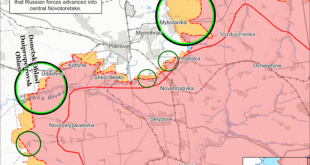Hawks want strikes on Tehran, but others advise a more limited approach.
Just hours after Sunday’s deadly drone attack by suspected Iran-backed militants on a U.S. military outpost in Jordan left three U.S. service members dead and more than 30 wounded, a familiar chorus of hawks began calling—once again—for the Biden administration to bomb Iran.
First it was Republican Sen. Lindsey Graham. “Hit Iran now,” he tweeted. “Hit them hard.”
Graham’s Senate colleague John Cornyn was even more blunt. “Target Tehran,” he wrote on X, formerly Twitter.
And Sen. Tom Cotton said that anything less than hitting Iran directly “will confirm Joe Biden as a coward unworthy of being commander-in-chief.”
The Biden administration said in a statement on Sunday that U.S. intelligence had already determined that the drone strike was orchestrated by “radical Iran-backed militant groups” in Syria and Iraq. The Associated Press reported on Monday that groups in Iraq were specifically responsible, and a coalition of Iran-backed militias called the Islamic Resistance in Iraq claimed on Sunday that it had targeted U.S. personnel in the vicinity, but it did not explicitly confirm that it had carried out this specific attack.
Iran said it had “no connection and had nothing to do” with the strike, stating that decisions by so-called “resistance groups” in the region to attack U.S. forces are made by the groups on their own. However, Iran remains the primary backer of such groups, and its Islamic Revolutionary Guard Corps maintains close ties with them.
For weeks, the Biden administration has tried to use a limited approach to stop attacks by Iran-backed militants in Iraq and Syria—who have targeted U.S. service members in those countries 165 times since October, according to one U.S. official—in an effort to prevent the conflict in the Middle East, which has already expanded beyond the Gaza Strip to include southern Lebanon, Yemen, Iraq, and Syria, from escalating into a full-fledged regional war. In response, the Biden administration has responded with eight rounds of airstrikes on Iranian proxies in Iraq and Syria since October, and a similar number of strikes against the Iran-backed Houthi rebel group in Yemen.
Now, under immense pressure in Washington after the deadliest attack on U.S. service members in the region in four years, Biden himself appears to be indicating that the status quo of limited strikes on Iranian-backed militia bases in Iraq and Syria and shooting Houthi missiles off of their launchers in Yemen is not going to cut it anymore.
“We had a tough day last night in the Middle East. We lost three brave souls in an attack on one of our bases,” Biden said at an event in South Carolina on Sunday. “And we shall respond.”
But how might Biden do so? As the U.S. Defense Department draws up military plans for Biden to consider, Foreign Policy talked to a range of former officials and experts about what his options are. They outlined three potential ways forward: striking inside Iran, hitting Iranian targets in the region, or pursuing diplomacy.
Option 1: Strikes Inside Iran
In the wake of Sunday’s drone strike on Tower 22, a remote U.S. desert logistics hub in Jordan located near its borders with both Iraq and Syria that is used to help coordinate the fight against the Islamic State, Biden’s critics converged on a similar line of attack: In keeping strikes against Iranian proxies limited to ensure that military tensions in the Middle East didn’t escalate, the Biden administration actually allowed Iran to set the table for further escalation.
And some former U.S. military officials are insistent that comprehensive strikes inside Iran itself are the only way to send the message to Tehran to knock it off.
“We’ve allowed ourselves to come to a point where now, direct strikes on Iran are what is required to quell this activity,” said John Miller, a retired three-star Navy admiral who previously commanded the U.S. Fifth Fleet in the Persian Gulf. “In true Iranian fashion, they’re going to push and push and push, until they sense that they’ve come to a red line. They do that themselves. They do it through their proxies. Well, they crossed the red line. They need to be held to account for that.”
Miller said the United States should lead strikes inside Iran that degrade the economic interests of the Islamic Revolutionary Guard Corps as well as its ability to ship weapons overseas. And he said that the United States should put in place sanctions that further cripple Iran’s ability to export oil.
“It can’t just be a one-for-one tit for tat—if you kill our folks, we’re going to strike back,” Miller said. “That doesn’t deter them, especially when dealing with proxies, because the Iranians are willing to fight to the last proxy.”
 Eurasia Press & News
Eurasia Press & News

